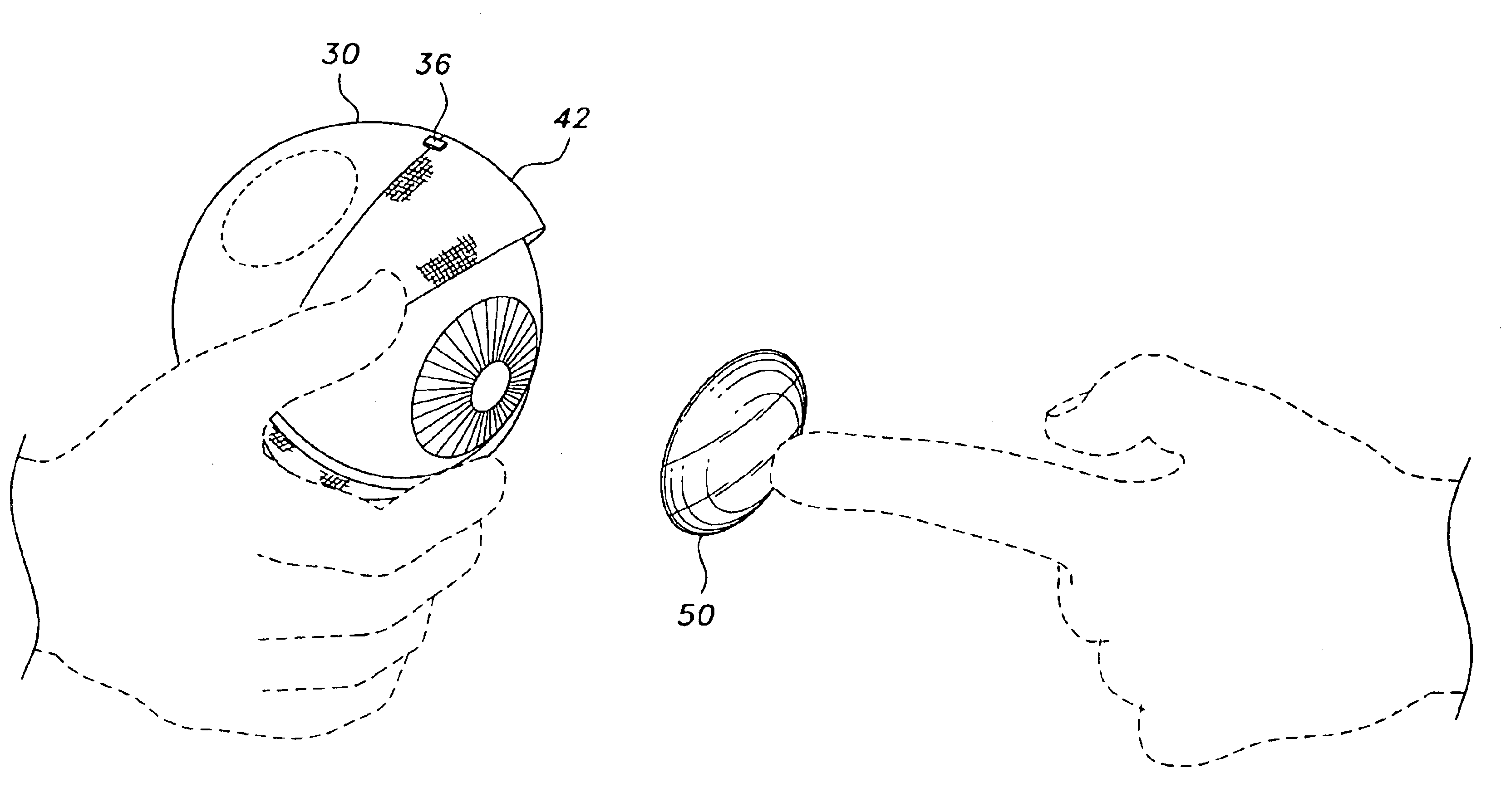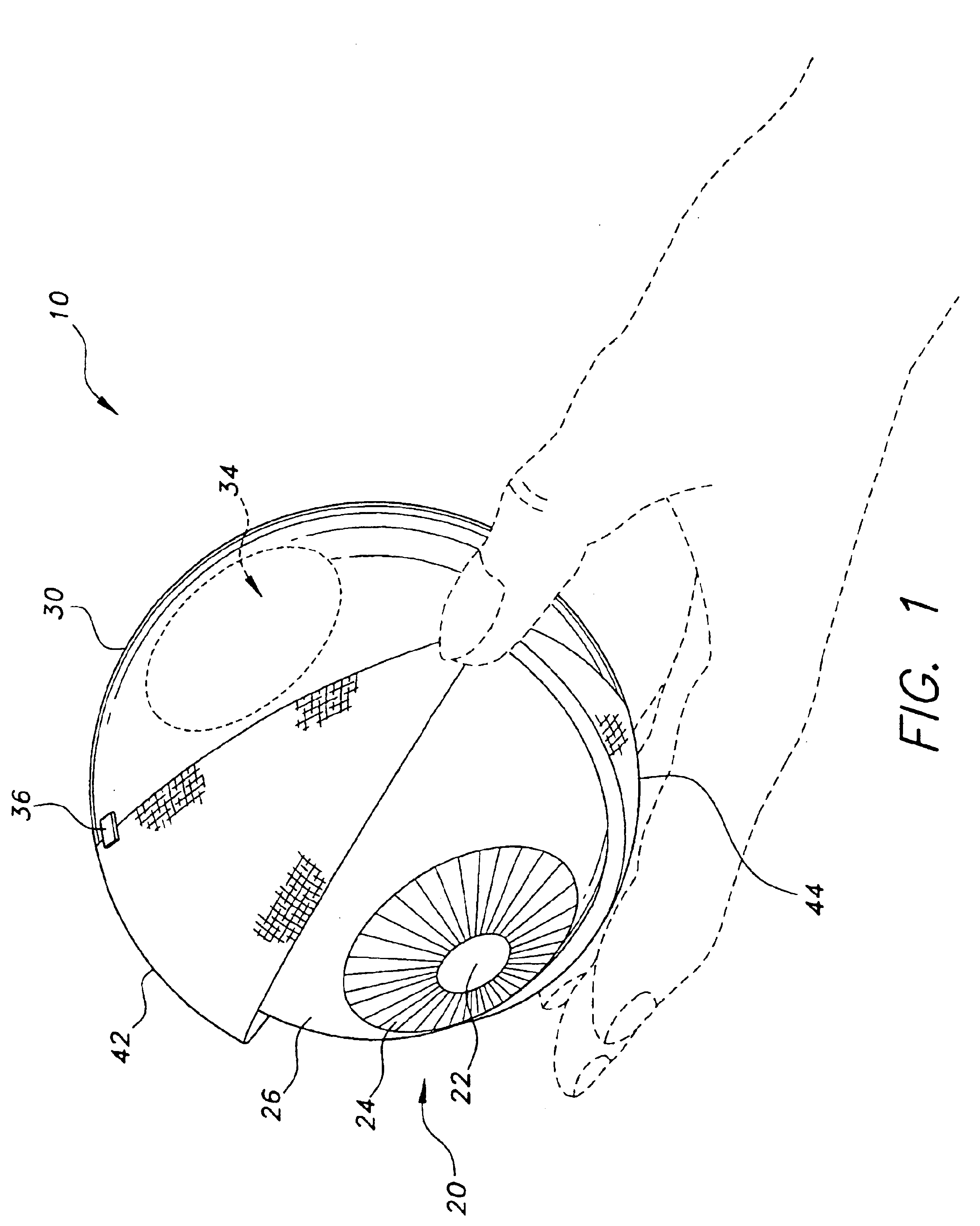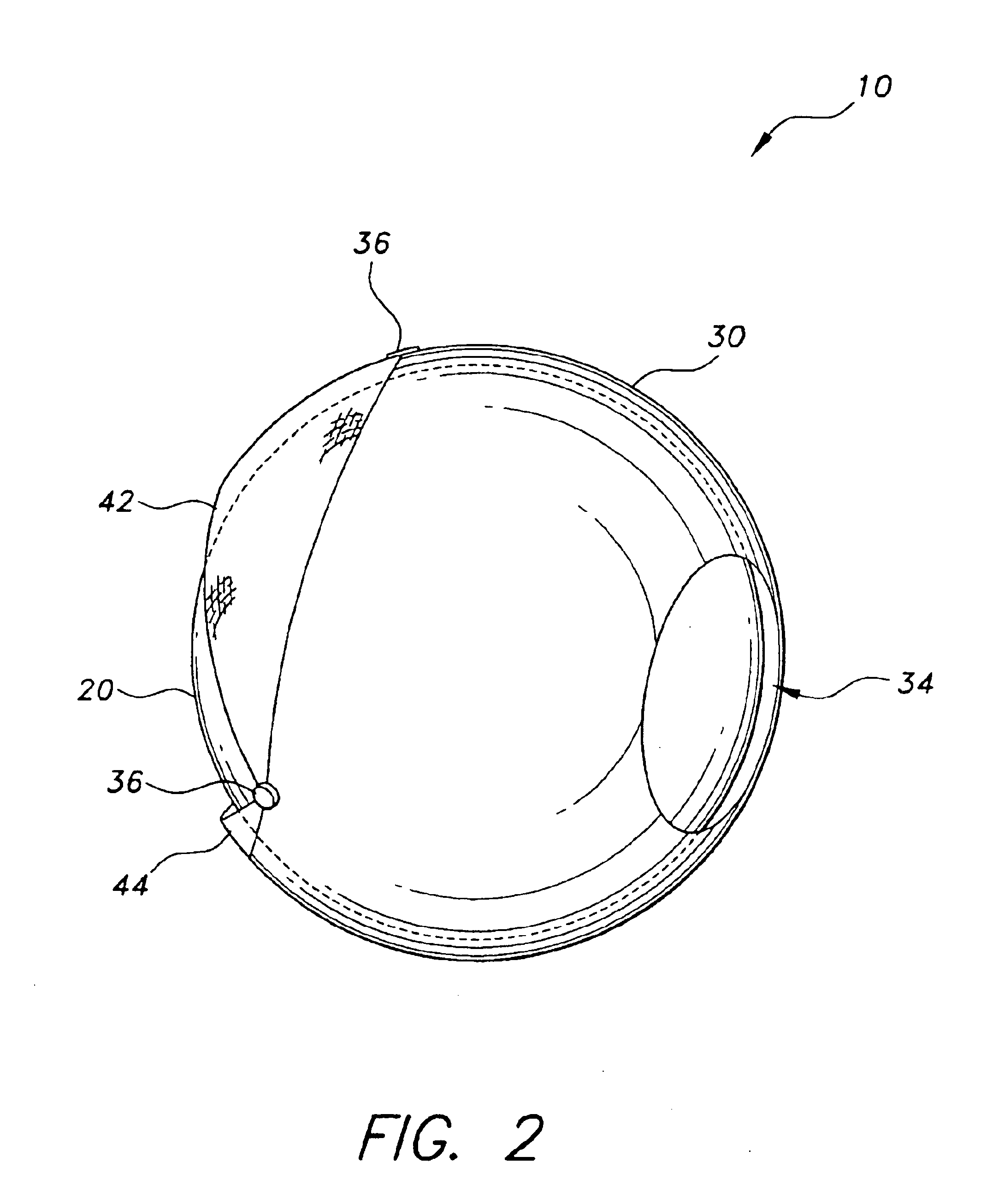Visual aid using contact lenses
a technology for visual aids and contact lenses, applied in the field of ophthalmologic models, can solve the problems of not being able to hold the entire eye model in the palm of a hand, not being able to teach the new contact lens wearer how to properly insert and wear the contact lenses, and not being able to give enough hands-on to instill confiden
- Summary
- Abstract
- Description
- Claims
- Application Information
AI Technical Summary
Benefits of technology
Problems solved by technology
Method used
Image
Examples
Embodiment Construction
[0022]The present invention is a visual aid for using contact lenses, generally designated as 10 in the drawings. As shown in FIG. 1, the visual aid for using contact lenses 10 is basically an enlarged model of the human eye having an outer cover 30, a model eyeball 20 moveably contained within the outer cover 30, and upper and lower eyelids 42, 44 that can be opened and closed.
[0023]The model eyeball 20 is generally spherical, having a shape similar to the human eye. Anatomical features of the human eye are visible on the surface of the model eyeball 20, and include a pupil 22, an iris 24, and a sclera 26.
[0024]The outer cover 30 contains the model eyeball 20, and has a front opening that exposes the eyeball 20. In use, the model eyeball 20 is generally oriented within the outer cover 30 so that the pupil 22 and iris 24 and a portion of the sclera 26 are visible through the front opening. The outer cover 30 has a rear opening 34, seen best in FIG. 2, to permit manipulation of the m...
PUM
 Login to View More
Login to View More Abstract
Description
Claims
Application Information
 Login to View More
Login to View More - R&D
- Intellectual Property
- Life Sciences
- Materials
- Tech Scout
- Unparalleled Data Quality
- Higher Quality Content
- 60% Fewer Hallucinations
Browse by: Latest US Patents, China's latest patents, Technical Efficacy Thesaurus, Application Domain, Technology Topic, Popular Technical Reports.
© 2025 PatSnap. All rights reserved.Legal|Privacy policy|Modern Slavery Act Transparency Statement|Sitemap|About US| Contact US: help@patsnap.com



